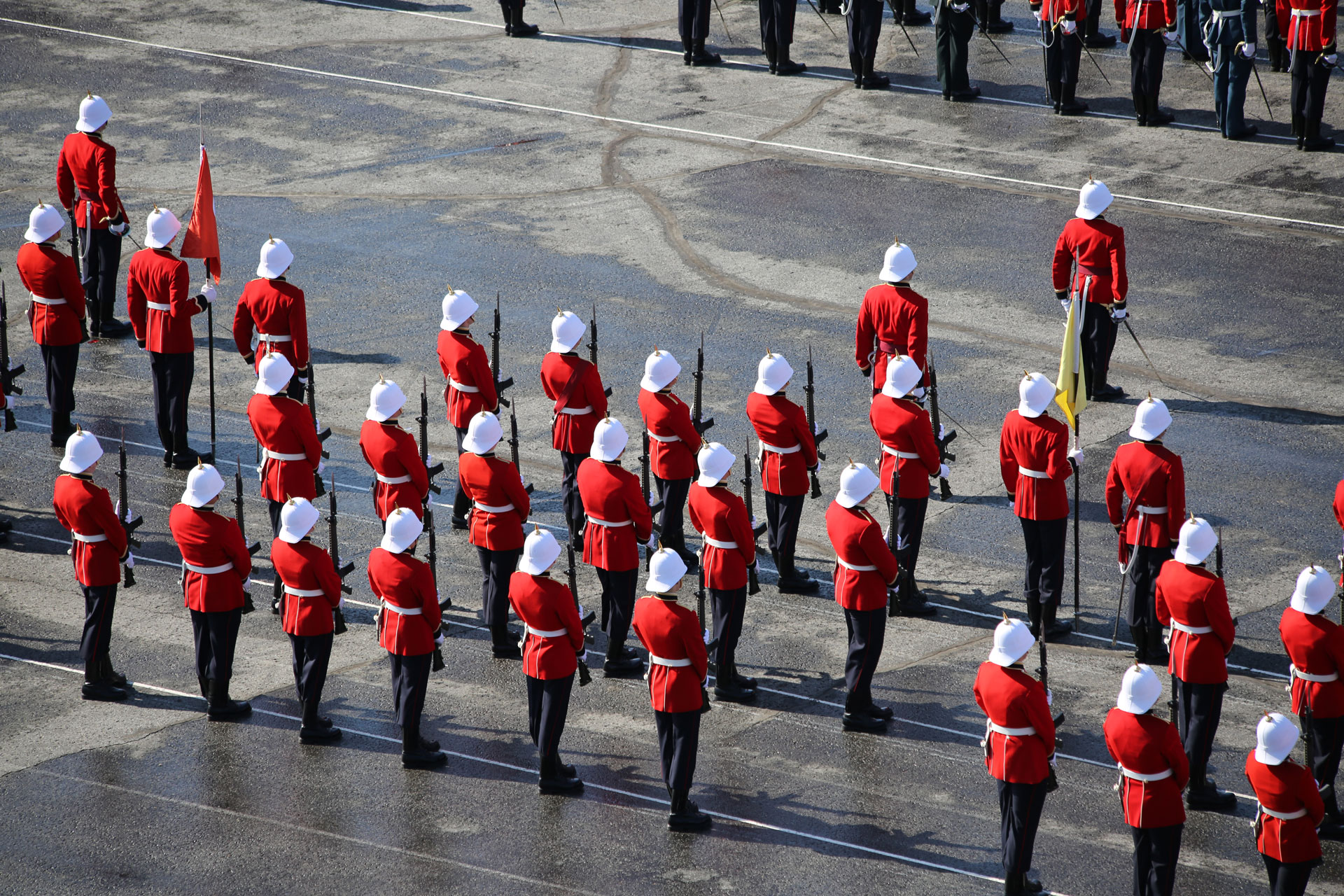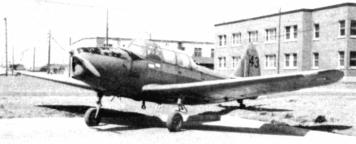
The Great Plane Robbery or, Vol dans la Nuit
by 4644 Commander (Ret’d) Alan (Casey) Hale (CMR 1960)
Researched by E3161 Victoria Edwards (RMC 2003)
The photo is a Fairchild Cornell parked on the parade square of Collège militaire royal de Saint-Jean (CMR), at Saint-Jean-sur-Richelieu, Québec, taken in May 1957 (CMR is about three miles from the nearest airport). The Cornell was one of the training aircraft used by the RCAF during WWII, somewhere between the Tiger Moth and the Harvard. The structure immediately behind the aircraft is one of the barrack blocks; behind it is the drill hall which borders on the main highway and the Canadian National Railways line to New York State.
4644 Casey Hale (CMR 1957) was a member of the fourth class of entry in 1955 at CMR; one of about forty Naval Cadets (sixty-eight Army and sixty-five Air Force); about two-thirds French and the remainder English speaking. Cadets would do three years at CMR (recruit, first and second) and then go on to RMC for their third and fourth years. Saint-Jean is situated on the Richelieu River, about twenty-five miles south of Montréal on the highway and railroad to New York State. Saint-Jean was also the location of CFB Saint-Jean, home of the Canadian Forces Recruit School, Language School and other facilities. Prior to integration this base was known as RCAF Station St. Johns — RCAF boot camp for other ranks. In addition, it was also the support base for CMR. The airport flight line was civilianized sometime after the war and before CMR opened. Life for the officer cadets at the colleges was very demanding, with the greatest emphasis on academics and sports. From its opening, CMR was in a development stage of new construction (the fort was established by the Brits in 1666, and was the site of a battle during the War of 1812, and then home to various cavalry and infantry units until the end of WWII). Some of the original moats are still in evidence, and some of the buildings date back to the mid- to late-1800s. Because not all facilities needed were available to us (playing fields, pool, hockey rink, etc.), we made considerable use of those located at the Air Base. In addition, we would do our cross country runs to the Base and back — a distance of about three miles each way — for the most part, all open fields.
It was during these runs that we took particular note of the Cornell aircraft parked on the flight line. And of course, being young men with strong athletic bodies, and with no shortage of imagination (albeit sometimes misdirected), thought that this aircraft would look nice as a static display at CMR. After all, it was painted in Air Force livery and parked (so we thought) on a RCAF Station, so therefore, was open game for a skylark. Right? Wrong! We didn’t notice that the roundel painted on the fuselage and wings, did not have a maple leaf in the centre (it was the RAF roundel used by the RCAF during WWII).
Final exams for first and second year cadets usually finished about two weeks before graduation ceremonies took place (about mid-May). This gave time for supplemental exams to take place — for those who dipped no more than two subjects — and for all to get ready for elemental summer training with their respective services. Accordingly, on the night of May 7, 1957, a group of about thirty or so first year (my class) did a cross country run to the airport and moved all 2,070 lbs. of this aircraft over several miles of field, down railroad tracks, and through ditches and other obstacles — like fence posts and gates which were temporarily uprooted — and placed it on CMR’s parade square. The exercise began about midnight and was completed by 0500. Later that morning our Commandant, H11171 Colonel Marcelin L. Lahaie, DSO, CD, was driving by the parade square on the way from his home to his office and was no doubt “amused” on seeing the aircraft. He phoned his counterpart at the Air Base, Group Captain Jean G. Archambault, AFC, CD, and we have it on the best authority that the conversation went something like this:
Col. Lahaie: Good morning Jean (John). A funny thing happened last night; one of your aircraft got lost and landed on our parade square (heh, heh, heh).
G/C Archambault: Well, I’m afraid the joke’s on you Marc, as we don’t have any aircraft assigned to this base.
Col. Lahaie: Holy smoke! (or words to that effect).
Col. Lahaie had been Commandant since CMR opened, and was due for rotation that summer. His replacement was — you guessed it — G/C Archambault, who only had to move a few miles, and it was he who later filled us in on some of the details of the event (particularly the preceding conversation). At this point one might say that all hell broke loose (or the brown stuff hit the fan, take your pick). The Fairchild Cornell aircraft actually belonged to a TCA (now Air Canada) pilot who had purchased it from Crown Assets and Aircraft Industries Ltd., a civilian maintenance and overhaul company located at the airport, who were in the process of upgrading the “bird” to qualify for its Certificate of Airworthiness. At lunch that day an announcement was made to the effect that all those involved in moving the aircraft would fall in at 1300, dressed in coveralls and running shoes, to move it back to the base. It took all morning to clear streets of parked cars and provide a police escort for the return trip. Apparently it was quite a show. Needless to say, the brass at Aircraft Industries were not impressed, and initiated the routine of having round-the-clock guards posted on the flight line. The citizenry of Saint-Jean appeared to be quite amused at the antics of the cadets — it isn’t every day one would see an aircraft being paraded through their town!
Regretfully, one of my chums and I were not allowed to participate in “The Great Plane Robbery” (or, Vol dans la Nuit, in the other official language) as it became known. We had both been in hospital and missed the first week of exams, so had to make up the deficiencies at the time the “robbery” took place. Since I had my appendix removed and my chum had been injured in a pillow fight (someone was using “loaded” pillows!), our participation in the raid would only have impeded the progress of the others. One of our classmates awakened us at about 0500 so we could see the aircraft parked in the middle of the parade square, and the sun rising in the east.
Ensign Spring 2005, Naval Museum of Alberta Society www.navalmuseum.ab.ca
http://www.navalmuseum.ab.ca/Newsletters/2005%20Newsletters/(1)%20Ensign%20Spring%202005.pdf


